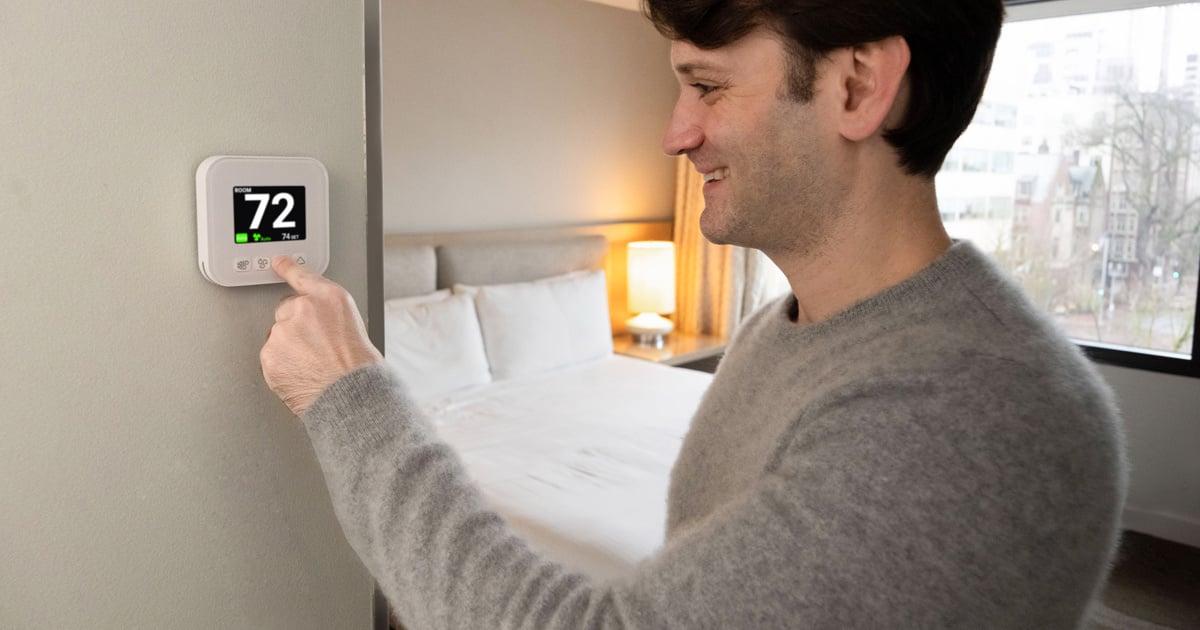Best Practices for Thermostat Settings in Hotel Rooms: Balancing Guest Comfort with Energy Efficiency
In the hospitality industry, guest comfort and operational efficiency often appear at odds. One area where this balancing act is particularly challenging is in managing thermostat settings in hotel rooms. Optimizing thermostat settings not only enhances guest satisfaction but also plays a critical role in energy conservation and cost management. Here are some best practices to help hoteliers strike the perfect balance between guest comfort and energy efficiency.
![]() Understanding Guest Preferences
Understanding Guest Preferences
Guests from different regions and climates have varying preferences for room temperature. Collecting and analyzing guest feedback can help identify common preferences, which can then be used to set a baseline for thermostat settings. Offering guests the ability to adjust the temperature to their liking is crucial, but having a recommended setting can guide them towards more energy-efficient choices.
![]() Implement Smart Thermostats
Implement Smart Thermostats
Smart thermostats, such as those available from VTech Hospitality, provide a sophisticated solution for managing room temperatures. These devices can be programmed to adjust the temperature based on occupancy, reducing energy consumption when rooms are unoccupied.
![]() Set Temperature Ranges
Set Temperature Ranges
To maintain a balance between comfort and efficiency, establish a standard temperature range for occupied rooms. The U.S. Department of Energy recommends setting thermostats to 78°F (26°C) when rooms are occupied and 85°F (29°C) when unoccupied. These settings ensure guest comfort while minimizing energy usage. Communicate these guidelines to guests through in-room displays or informational materials.
![]() Use Energy-Saving Modes
Use Energy-Saving Modes
Encourage guests to use energy-saving modes on thermostats, especially when they leave the room. Providing instructions on how to activate these modes can be beneficial. Many modern thermostats come with an "Eco" mode, which adjusts the temperature to a more energy-efficient level without compromising comfort.
![]() Incorporate Motion Sensors
Incorporate Motion Sensors
Installing motion sensors in hotel rooms can significantly enhance energy efficiency. These sensors detect when a room is unoccupied and adjust the thermostat settings accordingly. This automation ensures that energy is not wasted on heating or cooling empty rooms, contributing to substantial energy savings over time.
![]() Regular Maintenance
Regular Maintenance
Regular maintenance of HVAC systems and thermostats is essential to ensure they operate efficiently. Dirty filters, malfunctioning sensors, or outdated equipment can lead to increased energy consumption and reduced guest comfort. Schedule routine inspections and maintenance to keep systems running smoothly.
![]() Educate Guests
Educate Guests
Educating guests about the importance of energy efficiency and how they can contribute can make a big difference. Simple tips, such as closing curtains during the hottest parts of the day or setting the thermostat to a recommended range, can empower guests to make energy-efficient choices. Providing this information in a friendly, non-intrusive manner can encourage participation without compromising their experience.
![]() Monitor and Adjust
Monitor and Adjust
Continuously monitor energy consumption and guest feedback to identify areas for improvement. Use this data to make informed decisions about thermostat settings and other energy-saving measures. Adjusting strategies based on real-time information can help maintain a balance between comfort and efficiency.
 Balancing guest comfort with energy efficiency in hotel rooms requires a combination of smart technology, thoughtful policies, and guest education. By implementing these best practices, hoteliers can create a comfortable environment for guests while reducing energy consumption and operational costs. Embracing innovative solutions like smart thermostats from VTech Hospitality can lead the way in achieving this balance, ensuring a sustainable and satisfying guest experience.
Balancing guest comfort with energy efficiency in hotel rooms requires a combination of smart technology, thoughtful policies, and guest education. By implementing these best practices, hoteliers can create a comfortable environment for guests while reducing energy consumption and operational costs. Embracing innovative solutions like smart thermostats from VTech Hospitality can lead the way in achieving this balance, ensuring a sustainable and satisfying guest experience.
